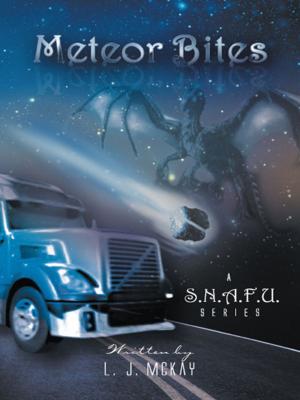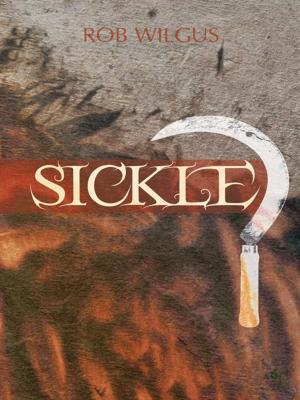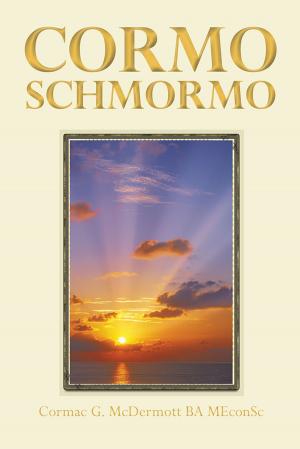Quantum Acad(Ynae3)Micssm: Unlocking the Force of the Predictive Mind
An Intermediate-Level Self-Help Book Concerning the Limitless Power of a Meta-Cognitive Mind
Nonfiction, Religion & Spirituality, Philosophy, Mind & Body, Health & Well Being, Self Help| Author: | Prof Claude E. Bonet | ISBN: | 9781466997097 |
| Publisher: | Trafford Publishing | Publication: | August 14, 2013 |
| Imprint: | Trafford Publishing | Language: | English |
| Author: | Prof Claude E. Bonet |
| ISBN: | 9781466997097 |
| Publisher: | Trafford Publishing |
| Publication: | August 14, 2013 |
| Imprint: | Trafford Publishing |
| Language: | English |
Key Term Application: quantum ('kwn-t?m\) n., pl. 1. A quantity or amount 2. Something that can be counted or measured 3. Physics. a. The smallest amount of a physical quantity that can exist independently, especially a discrete quantity of electromagnetic radiation b. This amount of energy regarded as a unit attributive. (The American Heritage Dictionary, p. 1480) Application to Workshop: Critical thinking is performed within the context of this mini-workshop; it is most similar to the research and development that transpires and takes place within a scientific research laboratory. That is, each and every interaction between participants, as well as the acquisition and facilitation of new and novel information, is contained and controlled, yet in a fashion that limitless participation is highly encouraged. In short, the overall breadth and depth of the information that is facilitated is a defined and specific amount or quality that is calculated, even calibrated and measured. Reference Source: The American Heritage Dictionary, 3rd ed. (New York, NY: Dell Publishing, 1994). ISBN: 0440219616. Foundational Concept: The Effective Fusion of Innovation with Execution! Structural Dynamics of Comprehensive Workshop The comprehensive workshop is comprised of three fundamental phases. The first phase, a.k.a. Phase I, is the Pine and Clay Phase. In short, it covers nothing more than the bare, yet vitally essential, nuts and bolts thereof; it is the most rudimentary elementary of all phases. The second phase, a.k.a. Phase II, is the Stone and Mortar Phase. In short, it covers the vital intricacies all applicable to a real-world context. Thus, it is the intermediate stage of critical thinking, change, development, and growth. It literally connects the dots and addresses the direct relevance it has regarding the utilization in the real world. The third and final phase, a.k.a. Phase III, is the Glass and Metal Phase. In short, it covers the cosmetics of critical thinking. It approaches critical thinking pertinent to the accessories thereof. Thus, it is the actual phase where each and every student makes CT their own. It directly correlates to each ones individually unique attributes and personality. In a meager nutshell, it is comprised accordingly: (1) Phase I, a.k.a. Clay and Pine Phase; (2) Phase II, a.k.a. Stone and Mortar Phase; (3) Phase III, a.k.a. Glass and Metal Phase. Workshop Description: Welcome to your Quantum Aca(ynaE)mics: A Critical Thinking Workshop, QCAD1501.E1 (Part I of III), with the underlying theme being Critical Thinking, the Vital Agent that Fuses Innovation with Execution. The chief underlying purpose for this course is to afford a smorgasbord of opportunities for engaging in critical research, critical assessment, and critical investigation pertinent to current academic theories, as well as real-world case examples. It also focuses on the growth and matriculation of ones limitless ability, capacity, and capability for engaging comprehensive and quasi-dimensional critical thinking (CT). Next, it endeavors to identify diverse explanations of individual differences in cognition (Robert & Ardes, 2010). Lastly, it is considered central to planning, problem-solving, evaluation, and many [divergent] aspects of language learning (Kearsley, 20042010).
Key Term Application: quantum ('kwn-t?m\) n., pl. 1. A quantity or amount 2. Something that can be counted or measured 3. Physics. a. The smallest amount of a physical quantity that can exist independently, especially a discrete quantity of electromagnetic radiation b. This amount of energy regarded as a unit attributive. (The American Heritage Dictionary, p. 1480) Application to Workshop: Critical thinking is performed within the context of this mini-workshop; it is most similar to the research and development that transpires and takes place within a scientific research laboratory. That is, each and every interaction between participants, as well as the acquisition and facilitation of new and novel information, is contained and controlled, yet in a fashion that limitless participation is highly encouraged. In short, the overall breadth and depth of the information that is facilitated is a defined and specific amount or quality that is calculated, even calibrated and measured. Reference Source: The American Heritage Dictionary, 3rd ed. (New York, NY: Dell Publishing, 1994). ISBN: 0440219616. Foundational Concept: The Effective Fusion of Innovation with Execution! Structural Dynamics of Comprehensive Workshop The comprehensive workshop is comprised of three fundamental phases. The first phase, a.k.a. Phase I, is the Pine and Clay Phase. In short, it covers nothing more than the bare, yet vitally essential, nuts and bolts thereof; it is the most rudimentary elementary of all phases. The second phase, a.k.a. Phase II, is the Stone and Mortar Phase. In short, it covers the vital intricacies all applicable to a real-world context. Thus, it is the intermediate stage of critical thinking, change, development, and growth. It literally connects the dots and addresses the direct relevance it has regarding the utilization in the real world. The third and final phase, a.k.a. Phase III, is the Glass and Metal Phase. In short, it covers the cosmetics of critical thinking. It approaches critical thinking pertinent to the accessories thereof. Thus, it is the actual phase where each and every student makes CT their own. It directly correlates to each ones individually unique attributes and personality. In a meager nutshell, it is comprised accordingly: (1) Phase I, a.k.a. Clay and Pine Phase; (2) Phase II, a.k.a. Stone and Mortar Phase; (3) Phase III, a.k.a. Glass and Metal Phase. Workshop Description: Welcome to your Quantum Aca(ynaE)mics: A Critical Thinking Workshop, QCAD1501.E1 (Part I of III), with the underlying theme being Critical Thinking, the Vital Agent that Fuses Innovation with Execution. The chief underlying purpose for this course is to afford a smorgasbord of opportunities for engaging in critical research, critical assessment, and critical investigation pertinent to current academic theories, as well as real-world case examples. It also focuses on the growth and matriculation of ones limitless ability, capacity, and capability for engaging comprehensive and quasi-dimensional critical thinking (CT). Next, it endeavors to identify diverse explanations of individual differences in cognition (Robert & Ardes, 2010). Lastly, it is considered central to planning, problem-solving, evaluation, and many [divergent] aspects of language learning (Kearsley, 20042010).















